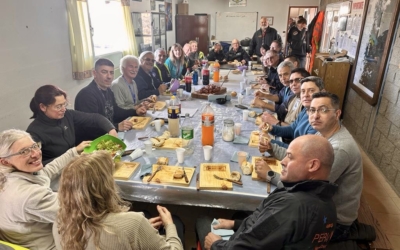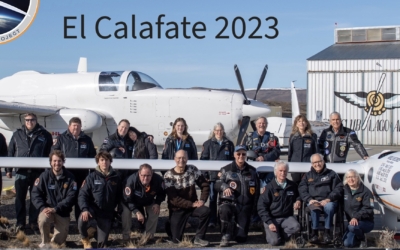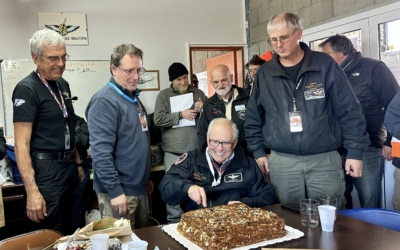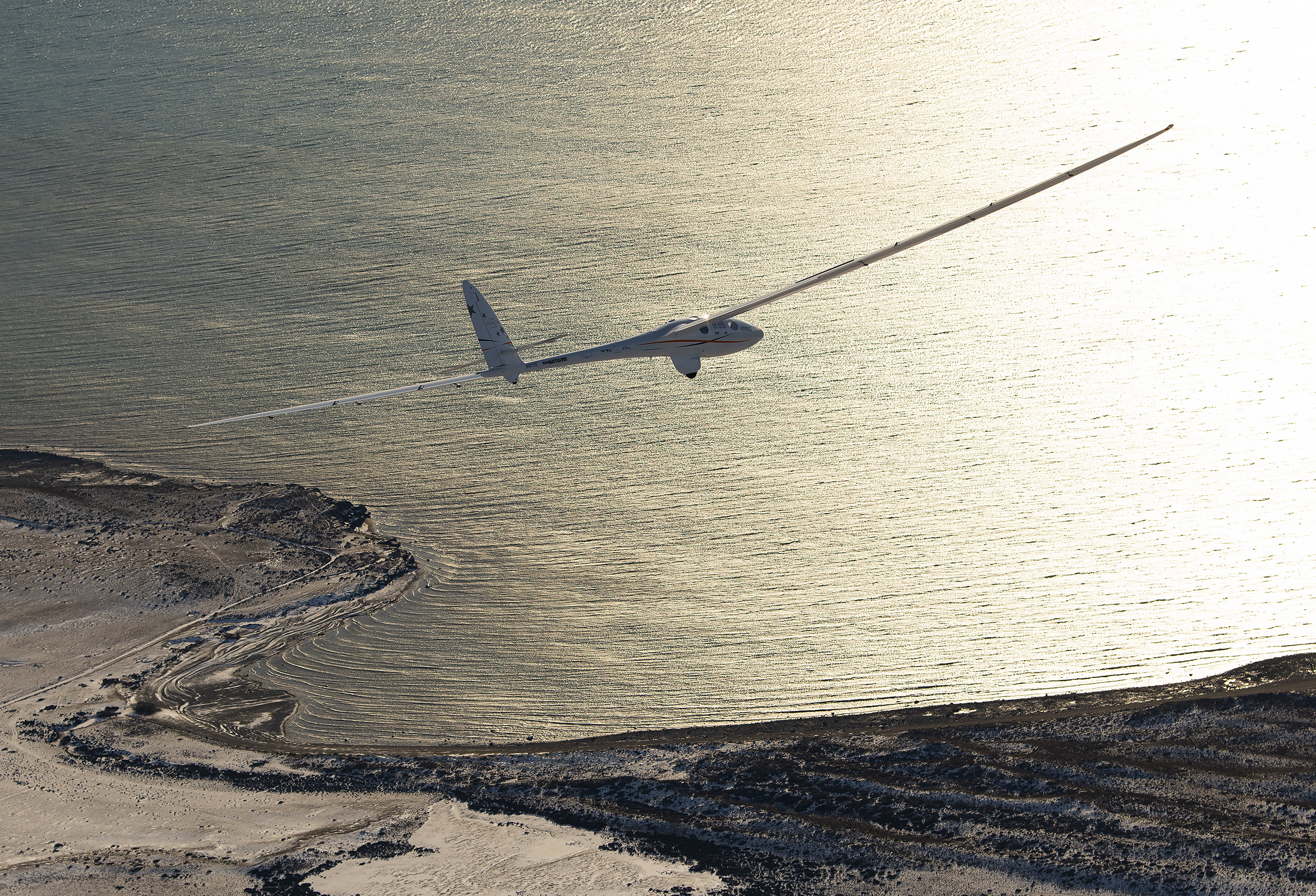
Perlan Project Support Teams – Part One
Airbus Perlan Mission II is incredibly fortunate to have a team of dedicated volunteer specialists. It takes a huge amount of work to put Perlan 2 into the air to safely hunt for stratospheric wave. These support teams are the unsung heroes of Perlan. A one sentence description (below) from them covers countless hours, even days or weeks of dedicated support. There will be another blog to complete the support team summaries. It’s too much to put into one blog.
CapCom by Lars Bensch
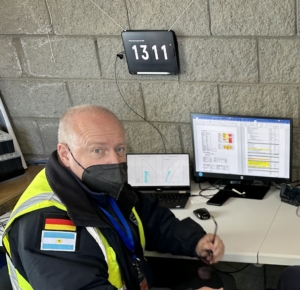
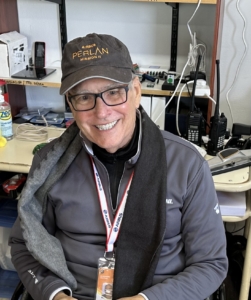
In Perlan we still use the term “CapCom” as we do not have direct control over the glider once it is flying, but keep close contact to the pilots via communication. The acronym “CapCom”, which stands for capsule communication, was used as term for a group of people who had contact during the early space flights in the US, starting with the Mercury program. CapCom later became Mission Control.
CapCom comprises of different functions, including the Flight and Test Director, Meteorology, Tracking/Guidance, Communication and several other support functions. About 80 parameters are sent from the glider via telemetry to CapCom and are constantly checked before and during the flight to ensure a safe operation and to allow early intervention on the mission in case of abnormal observations.
Prior to a flight, CapCom starts a 48 hour launch-countdown-timer, which is the signal for seven teams to prepare the glider, towing aircraft, run their checklists and get ready for the upcoming launch. As weather conditions may change, the timer can be set on “hold” and resumed afterwards.
BTW, the seven teams cover all together 23 different functionalities. This gives an idea how complex the overall operation is to safely guide the pilots into and back from the stratosphere.
Rebreather by Miguel Iturmendi
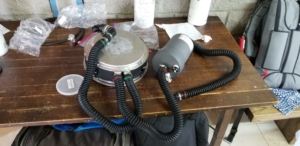
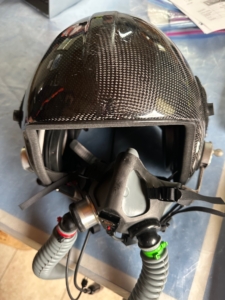
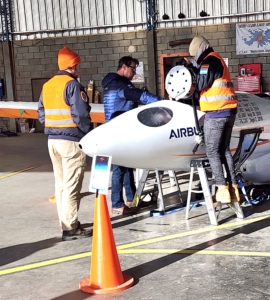
The rebreather system is part of the Environmental Control Life support system (ECLSS), The Perlan pressurized glider carries 2 sets of rebreathers, one for each pilot. Each rebreather consist of a closed loop breathing system that removes CO2 from the inside the loop, 100% oxygen is inserted into the closed loop circuit and sent to an artificial mechanical counter lung, from there the pilot inhales the 100% 02 and exhales CO2 and O2 and some small amount of other gases. The exhale loop connects to a CO2 removal cartridge that chemically removes the CO2 leaving the O2 to continue to the counter lung where the cycle of breathing starts again. The system is fully mechanical and has very few moving parts. There are electronics inside the closed loop to measure the O2 content that is inside the system, also an emergency manual and automatic system to inject higher pressure 100% O2 inside the pilot breathing side of the loop in case it becomes necessary. The emergency O2 system is manual below FL400 and both automatic and manual above FL400.
The rebreather system is a first in aviation in the manner that it has been designed and utilized inside the cockpit of the Perlan. It works in conjunction with the pressurization system and the environmental control system as part of the ECLSS. The rebreathers have been in use for over 8 years without any failures, performing near flawlessly. After each flight or ground test the rebreathers are removed, inspected, disassembled, cleaned, assembled, bench tested, reinstalled in the Perlan and tested for leaks and functionality. The team has 2 set of rebreathers for a total of 4 units. This allows the team to quickly swap sets and be ready in a timely manner for the next flight. As most of the parts and components are custom made for our unique application the Pelan team brings all the necessary replacement parts to El Calafate. We periodically fix and overhaul the rebreathers to ensure they do the expected job with 100% certainty.
Weather Forecasting by Dan Gudgel, Walt Rogers and Matthew Scutter
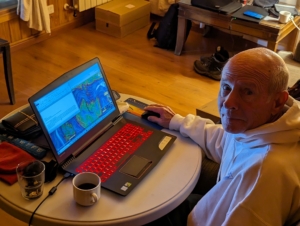
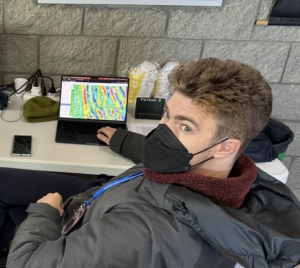
Dan Gudgel: My function is two-fold here at El Calafate. First I am an on-site spokesperson in consolidating and summarizing the myriad of meteorological information from the several entities providing weather information in support of the Perlan Project. Secondly I daily assess the observed weather in comparison to meteorological models to aid the Perlan pilots. This aid is for launch and landing operations as well as transition up/back through the Troposphere upon climbing into the Stratosphere.
Walt Rogers: Walt Rogers works remotely from Palmdale, California complementing his colleague, Dan Gudgel, for shorter term forecast analysis. Emphasis is on the mid to long term forecasts for conditions conducive to an operational stratospheric wave mission. Comprehensive and detailed numerical model graphics from the GFS and ECMWF models are generated with animations. This includes forecast soundings, Time Sections, 2D maps representative of the troposhere (500mb) and the polar night jet winds (FL990). Skysight six day stratospheric wave forecasts are used to select outlooks of possible mission days. Preparation occurs overnight for Dan Gudgel preparing him to begin early morning analysis each day. (Sorry no photo)
Ramp/Launch/Recovery by Jackie Payne
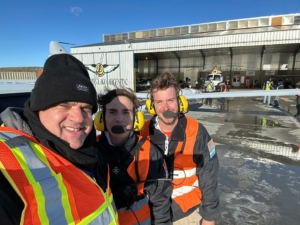
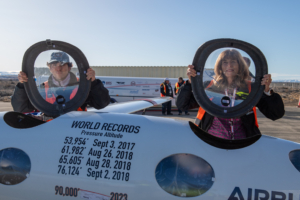
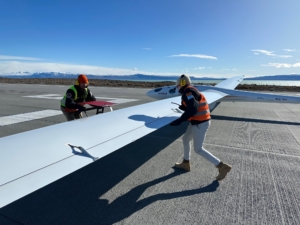
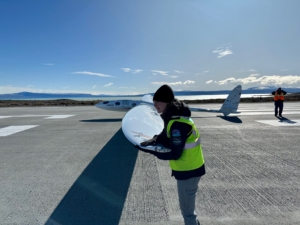
The launch of Perlan 2 behind the Egrett is a very unusual glider operation. First every glider system must be pre-flight validated in the hangar or on the ramp. Once the pilots slide into position wearing insulated flight suits and thick insulated boots with heated insoles they must connect all remote antennas and charge cables. Radio waves do not go through carbon fiber so the antennas must be placed on or near a window. The tablets that display and control the cameras must be checked one more time. The pilots don their masks and will be on 100% oxygen for the next 6 hours. The pilots are handed their respective hatches to slide into the cockpits and to be aligned and latched onto the inside of the cockpit entry portal. Air is injected into the cabin to pressurize it for a leak check. If that goes well then we pull the window protection film off the polycarbonate windows. They are soft and easily scratched when warm but extremely hard when cold.
Before moving off the ramp we get permission in Spanish to pull the glider backwards to the runway. Jim specifies which side of the centerline stripe he wants based on any crosswind. Once on the runway the tail stays high on the tail dolly to decrease the angle of attack, making it less likely to lift. Perlan 2 is a “floater” and might lift off the ground if a gust of 40 kts surprised us. That’s why our limitations are gusts of 30 knots. The tail dolly is only removed once the Egrett is in position and Jim gives the okay. The tow vehicle must be pulled away. We have a team of 5 to quickly remove the heavy wing wheel, hold the wings level when they dance in the wind, 2 to go to the back end of the Egrett wearing ear protection and miked on hand held radios in chest packs. One unrolls the Dynema rope while the other trails to do a final check for any knots. The glider is then pushed forward or pushed back to tighten the rope. It typically is under 2 feet of movement even the first time on this runway! Hook up is at the nose with usual hand signals augmented by radio via miked headset.
Permission to take off is requested in Spanish, then final tow and glider communication is done in English on team frequency. The wing runner must be fast but only for a few steps. If the headwind is 20 kts it only takes 200 feet for the mighty Egrett to pull the heavy Perlan 2 into the air. There’s typically a wing bobble when traversing the turbo prop wash, which is unavoidable.
Recovery is easier for us but landing is more difficult for Jim. He wants up to the minute wind velocity and direction which we supply. His landing approach is always offset of centerline so he can see the centerline out one eyeball window. We check the tire as soon as we get close to the stopped glider. In previous years it has been flat due to the intense cold, but not this year with the improved wheel and tubeless tire. However we carry an air tank and fuselage dolly in the back of the tow truck, just in case.
This year the launch/recovery team is Tago DePietro, Alan Murray, Interns Ivan Altunin, Rodrigo Sanz, Elisa Vasenden, and Jackie Payne.
Tech Support by Armistead Sapp

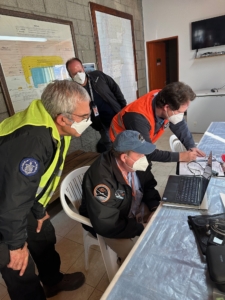
I have helped Perlan with its data management and IT needs since 2019. I have helped with gathering the photos and videos taken by Perlan team members. I have helped with the organizing of all the Perlan in-flight videos. During a campaign, I have helped manage the IT needs and issues: i.e., every station in Capcom is on a wired network, and we have a local Network Attached Storage (NAS) syncing with a similar device in the US to back up our data. I help with the weather data. I help with updates to the website. And I support the team with any IT or computer needs.
When Armistead says “helped” that is understated to the extreme. In 2019 he completely revised the weather data uploads to shave hours off the rendering time. It meant that the pilots had the early morning forecasts BEFORE takeoff rather than verbally on the radio after they were flying. This year Armistead got the weather balloon computers who were at the end of their service life to keep working. He got the low bandwidth Thales flight videos to download in a few hours (instead of a few days after the first flight). His support of videos for my flight day montage videos made them much more all-encompassing. 80% of the website traffic has been to those blogs. And he “hosts” the Virtual Cockpit Cafe with pastries and (my fav) apple strudel on flight days!
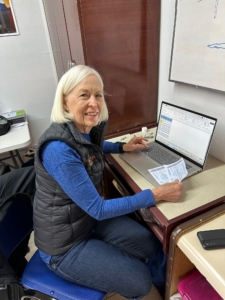 Purser by Linda Warnock
Purser by Linda Warnock
Maintain a spreadsheet to track the distribution of US dollars and Argentinean pesos for expenses related to our Argentina campaigns. This spreadsheet is also used in calculating and predicting expenses for future campaigns. Distribute and track all Perlan expenses while in Argentina. (Pay local vendors, team vehicle rental and fuel, hangar expenses, etc.) Compile team travel information and number of days in Argentina for travel reimbursement, and meals. Create a spreadsheet of team arrival and departure dates to assist in team travel coordination for travel between airports in Buenos Aires and for pick-up and departure in El Calafate.
Create, print, and distribute media materials for Perlan. (Photo cards, business cards, patches, stickers, posters, and banners for Oshkosh, SSA and distribution in Argentina.) Select and manage and distribute orders for Perlan team gear. Design and order gifts for distribution to key Perlan partners. (This is one of the most enjoyable parts of my job, meeting amazing people and witnessing their delight in receiving a token of our appreciation from Perlan.)

